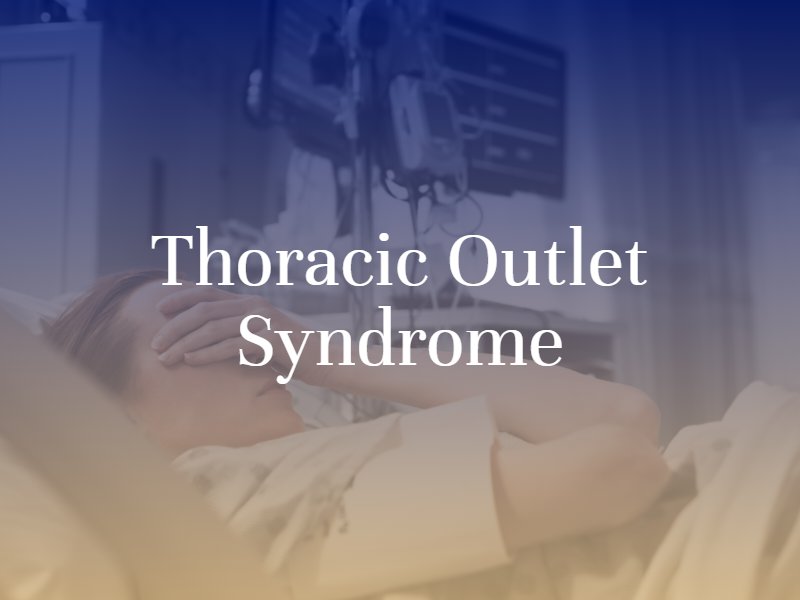
Thoracic Outlet Syndrome After an Accident
Colburn Law
Posted in Car Accidents,Personal Injury on October 2, 2020

Car accidents can cause serious injuries, from traumatic brain damage to broken bones, cuts, and bruises. One condition that you may develop is thoracic outlet syndrome, a group of disorders that occurs when an accident compresses certain blood vessels and nerves in your body.
Thoracic outlet syndrome is painful and can result in serious complications, and if you sustained this injury due to the negligence of another person, you could hold him or her liable for your damages. Contact our Seattle car accident lawyers at Colburn Law today to discuss your case.
Thoracic Outlet Syndrome After an Accident Signs and Symptoms
The thorax is the scientific term for the chest, and the thoracic outlet refers to the space between your clavicle and the first rib. When the nerves and blood vessels inside of the thoracic outlet suffer compression, serious pain and long-term damage can occur.
There are three main types of thoracic outlet syndrome.
- Neurogenic thoracic outlet syndrome occurs when you suffer compression to the brachial plexus, or the nerves that control movement in your arm, hand, and shoulder. Symptoms include muscle wasting, numbness, tingling, weakness, and pain in the neck, hand, or shoulder.
- Vascular thoracic outlet syndrome occurs when one or more veins and/or arteries under the collarbone suffer compression. Symptoms include hand discoloration or lack of color, numbness, tingling, weakness, and cold hands and fingers. You may also develop blood clots, pain, and swelling.
- Nonspecific-type thoracic outlet syndrome occurs when you develop pain in the thoracic outlet that worsens with activity, but you cannot determine the cause of this pain.
Common Causes of Thoracic Outlet Syndrome
Any activity that compresses or crushes the thoracic outlet can result in thoracic outlet syndrome. Birth defects can make you predisposed to develop this condition, while pregnancy loosens joints and makes it easier for you to suffer a thoracic outlet injury. Any excess weight that puts pressure on your joints, such as being overweight or carrying a heavy object, can also contribute to this condition.
In some cases, someone else’s negligence can cause thoracic outlet syndrome. Many people develop this condition after suffering some sort of trauma, usually during a car accident. You can also suffer thoracic outlet syndrome after performing a repetitive activity, such as typing at a computer or working on an assembly line. If you developed this condition at work or during an accident someone else is responsible for, you may be eligible for financial compensation.
Your Legal Options After Thoracic Outlet Syndrome
There are many pathways to recovery available for thoracic outlet syndrome victims. If you developed thoracic outlet syndrome due to no fault of your own, you have the right to hold the person or entity responsible for the accident liable for your injuries. For example, if you were in a car accident someone else caused, Washington’s fault-based insurance system requires the at-fault driver to pay for your damages. You can file an insurance claim or personal injury lawsuit against the negligent driver.
If you developed the injury over the normal course of your job duties, you can file a workers’ compensation claim for your medical costs and wage replacement. In some circumstances, you may be eligible to file a lawsuit against a negligent employer or third-party. Regardless of the circumstances surrounding your accident, you should speak with a Washington personal injury attorney to discuss your legal options.
Thoracic outlet syndrome can be expensive to treat. Your attorney can evaluate your case value, listen to your side of the story, and determine whether or not you can file a claim against the at-fault party. If he or she believes you have a case, your attorney will take the first steps toward filing your claim and seeking justice for your injuries.



